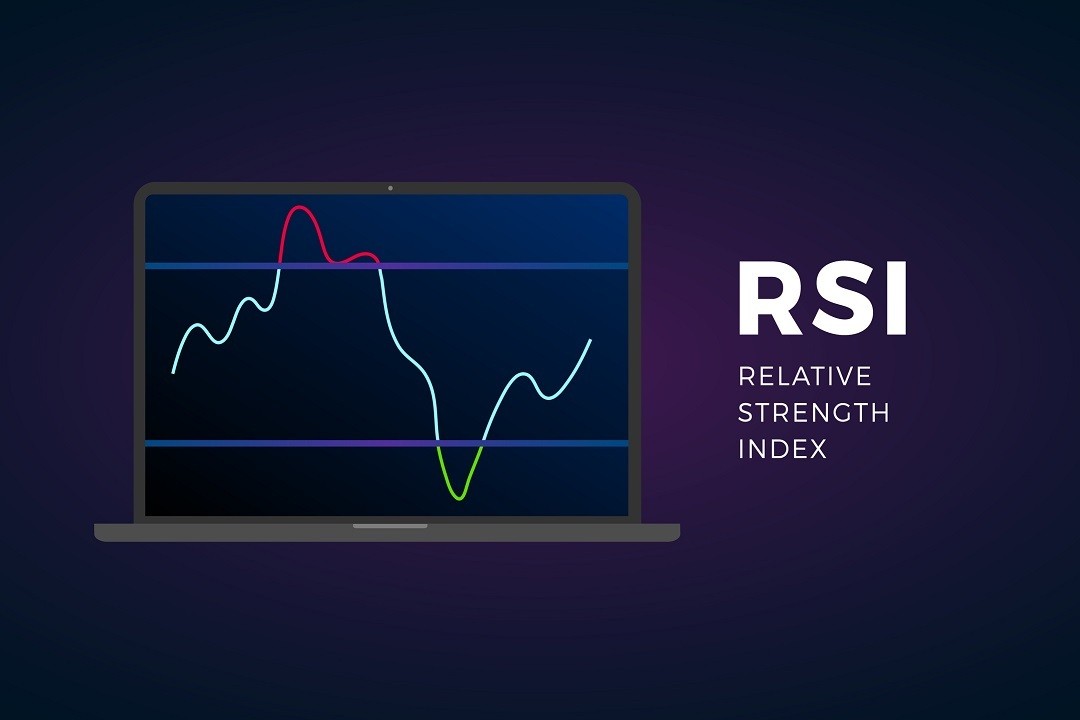Relative Strength (RS) is a popular technical analysis tool used by traders and investors to assess the performance of a particular stock, sector, or index in comparison to the broader market or a specific benchmark. This indicator helps identify which stocks or sectors are outperforming or underperforming others, providing a strategic edge for making informed trading decisions.
Understanding how relative strength works can be a game-changer in selecting stocks that demonstrate strong momentum and have the potential to deliver consistent returns. This article explores how Relative Strength works, its applications, and how you can use it to enhance your trading strategy.
What is a Relative Strength Index (RSI)?
The Relative Strength Index (RSI) is a popular momentum oscillator in technical analysis, created by J. Welles Wilder Jr. It measures the speed and change of price movements to identify overbought or oversold conditions in a market.
The RSI ranges from 0 to 100, with readings above 70 suggesting that a security might be overbought and due for a pullback, while readings below 30 indicate that it might be oversold and potentially poised for a price increase. This tool helps traders make informed decisions about when to enter or exit trades.
Formula and Calculation of Relative Strength Index (RSI)
The formula for the Relative Strength Index (RSI) is 100−(1+RS/100)
Where:
- RS: Average Gain / Average Loss
- Average Gain: The average of all positive price changes over a specified period (usually 14 periods).
- Average Loss: The average of all negative price changes over the same period.
Step-by-Step Process to Calculate RSI
- Calculate Price Changes
For each period, find the difference between the current and previous closing prices.
- Separate Gains and Losses
If the price change is positive, it counts as a gain.
If the price change is negative, it counts as a loss.
- Calculate the Average Gain and Average Loss
Take the sum of the gains over the last 14 periods and divide by 14 to get the Average Gain.
Do the same for the losses to get the Average Loss.
- Calculate Relative Strength (RS)
RS=Average Loss/Average Gain
- Calculate RSI
Plug the RS value into the RSI formula: RSI=100−(1+RS/100)
Example
Assume we have the following data for the last 14 days for a stock:
| Day | Closing Price | Price Change |
| 1 | 50 | – |
| 2 | 52 | +2 |
| 3 | 51 | -1 |
| 4 | 53 | +2 |
| 5 | 54 | +1 |
| 6 | 52 | -2 |
| 7 | 55 | +3 |
| 8 | 56 | +1 |
| 9 | 57 | +1 |
| 10 | 55 | -2 |
| 11 | 58 | +3 |
| 12 | 59 | +1 |
| 13 | 57 | -2 |
| 14 | 60 | +3 |
Step 1: Calculate Price Changes
Price changes are listed in the table.
Step 2: Separate Gains and Losses
Gains: 2, 2, 1, 3, 1, 1, 3, 1, 3
Losses: -1, -2, -2, -2
Step 3: Calculate Average Gain and Average Loss
Average Gain: (2+2+1+3+1+1+3+1+3)/14 = 17/14 ≈1.21
Average Loss: (1+2+2+2)/14 =7/14 =0.5
Step 4: Calculate Relative Strength (RS)
RS=0.51.21≈2.42
Step 5: Calculate RSI
RSI=100−(1+2.42/100)=100−(3.42/100)=100−29.24=70.76
The RSI for this 14-day period is 70.76, indicating that the stock may be approaching overbought levels.
How to Interpret Relative Strength Index (RSI)?
The Relative Strength Index (RSI) is a momentum generator that rates how fast and how much prices change. Its range is from 0 to 100. It helps find times when an investment is overvalued or oversold, as well as possible turning points.
1. Overbought and Oversold Levels
When the RSI is above 70, it indicates that the asset might be overbought and could be due for a price correction or pullback. Conversely, when the RSI is below 30, it suggests that the asset might be oversold and could be due for a price bounce or rally.
2. Divergences
A bullish divergence occurs when the price makes a new low, but the RSI makes a higher low, signalling a potential upward reversal. On the other hand, a bearish divergence happens when the price makes a new high, but the RSI makes a lower high, indicating a potential downward reversal.
3. Centerline Crossover
When the RSI crosses above the 50 level, it indicates that the average gains are higher than the average losses, suggesting bullish momentum. Conversely, when the RSI crosses below the 50 level, it indicates that the average losses are higher than the average gains, suggesting bearish momentum.
Advantages and Disadvantages of Relative Strength Index (RSI)
The Relative Strength Index (RSI) is a popular momentum oscillator used in technical analysis to evaluate the strength of a market trend. It helps identify potential reversal points by measuring the speed and change of price movements. Below are the clear advantages and disadvantages of using RSI:
| Advantages | Disadvantages |
| RSI is simple to understand and apply. | RSI can sometimes give false signals in volatile markets. |
| Helps in spotting potential reversal points. | RSI is a lagging indicator and may not predict future price movements accurately. |
| Works well with other technical indicators for confirmation. | The interpretation of RSI levels can be subjective and vary among traders. |
| Can be used to identify bullish and bearish divergences. | The standard 14-day period may need adjustments based on the asset and market conditions. |
| RSI is a well-known and widely used indicator among traders. | Different assets may have different overbought/oversold levels, making them less consistent. |
Conclusion
Relative strength is a powerful indicator for evaluating the performance of investments and identifying potential opportunities. By comparing a stock’s performance to a relevant benchmark or its peers, investors can gain valuable insights into its relative strength and make more informed decisions.
Understanding it can help you better navigate market fluctuations and optimise your investment strategy for long-term success. As with any investment approach, it’s essential to combine relative strength analysis with other tools and research to build a well-rounded strategy.
Frequently Asked Questions
Q1. What does high relative strength mean?
High relative strength indicates that a stock or asset is outperforming its benchmark or the overall market. This suggests strong momentum and the potential for continued upward movement in price.
Q2. What is a good relative strength number?
A good relative strength number typically falls between 40 and 90 during a strong uptrend. Values above 70 indicate overbought conditions, while values below 30 suggest oversold conditions.
Q3. How do you use the relative strength line?
The relative strength line compares a stock’s performance to a benchmark index. A rising line signals outperformance, while a falling line indicates underperformance, helping traders identify market leaders and laggards.










